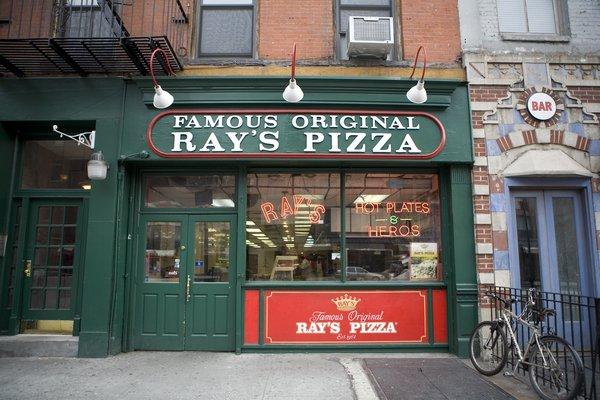Startup Ideas: 47 Ways to Start Your Own Business
We will send the material to you:
Issues discussed in the material:
- How to find a startup idea
- What Russian startup ideas “fired” in 2018
- How to test a startup idea
- How to implement it
- How to protect your startup idea from theft
Probably, every modern person at least once visited the thought: “What if I open my own business?”. But starting a business is not so easy, and not all undertakings are crowned with success. Why, with the same efforts, financial investments and time, some succeed, while others are haunted by failures? Startup ideas are very important. As a rule, ideas surround us everywhere, but we often do not notice them.
How to find a startup idea and create your own business

It is extremely unpleasant and insulting for any businessman if he understands that his business idea turned out to be untenable, since a lot of effort and money was spent on its implementation.
Those who are far from business may naively believe that entrepreneurs are looking for new ideas for a startup with minimal investment solely to make money. But in reality, businessmen try to implement a new idea when they realize that there is an opportunity to make the world a better place or successfully solve some problem.
People tend to draw ideas for startups in their technological preferences. But, as a rule, grandiose ideas are not born in this way, since the project is focused on solutions, and not on user problems. Any technology can be used by different markets, and therefore, in order to test each new technological idea, it is necessary to make new business acquaintances.
First of all, you should understand in which market you want to work. Next, in this area, you need to identify the problem that needs a solution.
This approach provides a number of advantages:
- Easier and faster testing of new options. There is no need to make new acquaintances, because when you generate different ideas for the same market, you are communicating with the same people. To get answers to questions, you just need to call or send a letter, and not try to arrange a meeting for a personal acquaintance.
- More efficient use of time. For example, when you decide to visit this or that event, you are only interested in the answer to one question: “Will there be businessmen there?”. You are not scattered and trying to become recognizable in the chosen market. Once you have defined your market, you can be sure that serving your audience will be a real pleasure.
After all, if you want to solve any problems of the market, it means that you sympathize with potential customers. Accordingly, you plan to provide services to these people for at least another 5-10 years. Business becomes much more interesting if you are really interested in solving people's problems.
Of course, to find "your" market, it will take some time. Trial and error will be inevitable. Any creative person is usually addicted to a lot of things. Therefore, at first it will seem that there are many markets where one could successfully turn around. But, as practice shows, not all problems can really "hook".
Test several ideas for different markets. This is the best option to understand which one you really want to work on.
Even your best ideas will have downsides. Identify and acknowledge them. A startup idea can only be successfully implemented if you find a method to effectively eliminate flaws.

Do not discard ideas that require hard and painstaking work to implement. Don't look for easy ways. If you manage to bring a complex idea to life, you will have almost no competitors in the market and the younger generation of businessmen will not become a threat to you.
If a company has successful competitors, this is more of an advantage than a disadvantage. It indicates that the product or service is in demand. If you are clearly different from your competitors and there is evidence that this feature can attract enough buyers, you can safely enter even highly competitive markets.
It is not uncommon for entrepreneurs to succeed by starting with a narrow niche. Success will come if a small audience is very interested in you, satisfied with the quality of the product or service, and also if there is a clear and effective scheme for entering a large market.
- Ideas are born in the course of communication. Share your thoughts, ideas, discuss markets and trends with others. So you will 100% get new ground for thought.
- Ideas are born in empathy. Dive into other people's problems and you can come up with new solutions.
- Ideas are born out of curiosity. What will happen in the future? How should everything work?
- Ideas originate in the subconscious. Write on paper the scope of your activity and the requirements for the idea. And then just mind your own business. In a few days, the idea will come by itself.
11 Methods for Finding a Startup Idea

- Live in the future
- Become an expert in any field
- Solve your own problems
- Look for pain points
- Improve existing
- Link cheap resources to financially wealthy consumers
- Borrow and improve
- travel
- Generate ideas for new markets
- Improve useless product
- Connect with smart people
Look to the future, use what was not there yesterday, learn about inventions, think about next generation products.
In the future, the popularity of mobile gadgets, DNA texts, ultra-thin materials will increase even more. What products and services should surround such items?
Think about change, try to complete the sentence: "If you are in the future, then ...". You can complete it, for example, like this: "... you are surrounded by supercars" or "... no one uses cash." And then create a startup that will allow this to be realized.
It is impossible to enter certain industries from the street, for example, customs, nuclear energy, and medical spheres. Companies in such areas, as a rule, are founded only after many years of work in foreign organizations. Turn into such an insider, and you will enter a promising market that not everyone can enter.
Michael Bloomberg majored in IT at the investment bank Salomon Brothers. In 1981, he was fired with a $10 million settlement. With that money, he founded Bloomberg L.P., a firm that provides financial information to companies in need. At the moment, the company occupies a leading position in the market. Bloomberg is the mayor of New York, his fortune is on the thirteenth line of Forbes.
Build some powerful tool. Master the development of mobile applications, online stores, start using Big Data. Then start talking to a lot of people, find out their problems, evaluate how you can help them.
Become a cool expert in two different areas at once. Medical field and sales, IT and government contracts, culinary industry and retail. There are many unique opportunities at the intersections.
Find out what problem is interfering with your own life. Focus on what you can't find an existing solution for. Problems appear when something changes in life. The situation is the same in the B2B sector. You have one company, and it cannot cope with some difficulty of its own. You create a second firm to solve such problems, and then this second firm suddenly becomes larger than the first.
Patrick Collison created the Stripe payment system when he got tired of connecting other people's inconvenient payment systems to his previous projects. Flickr was born when an online game needed a convenient way to store user images, and the game itself was successfully shut down.

Watch how people lose time and money, work without the desired result, suffer. And then show up fully armed and offer to solve problems with the help of your project. Learn as much as you can about hunger, poverty, epidemics, unemployment, crime, traffic jams, corruption and pollution. Establish close contact with those who have been solving these problems for many years.
Find what people hate. And they hate parking, looking for rental housing, getting visas, moving, going to doctors. When generating interesting startup ideas, think about how you can simplify life.
Use modern technology to reimagine the way you do everything. How should workers perform their duties in the age of smartphones? What should hospitals do in the digital age?
Monopoly leaders have almost no desire to develop. It is not easy to fight with them, but sometimes undertakings are crowned with success. Virgin Atlantic started out trying to provide better service than British Airways.
Buy low, sell high. This elementary formula is effective at all times. And now it is even easier to connect the product and the buyer from different parts of the world. China has a lot of cheap manufacturing facilities. In developing countries - cheap labor. Somewhere abandoned factories are idle, which can be rented for a penny. And somewhere on the other side of the world, the population has a lot of money along with unsatisfied needs. For example, freelance job exchanges like oDesk and 99designs connect employees from developing countries with successful firms.
Most of the ideas for a startup are copied from other companies. Many successful firms once went down this path. What can be added to successful ideas? New distribution channels, better service, improved quality?
In the small business segment, fashion trends appear all the time. Now co-working and bubble tea are at the peak of popularity, tomorrow private kindergartens will be in demand, the day after tomorrow - SMM agencies. These trends spread around the world quite slowly, and you can have time to be inspired by new trends. It is more reliable than something unknown and more interesting than buying a franchise.
In the US, each college has its own merchandise in the form of sweatshirts, T-shirts, and caps. There were no such schemes in Russia until one student founded UniFashion. Now buyers of his products can be found in any hostel.

Get ideas for a successful startup on the other side of the world. Each sphere has its own centers of trends. The heart of the fashion industry is in Paris and Guangzhou, the software industry is in the Valley, and the financial industry is in New York and London.
In the early 80s, Howard Schultz worked at Starbucks. Then there were no drinks on sale - Starbucks specialized exclusively in the sale of coffee beans. One day, Schultz went shopping in Milan and saw that literally on every street there is a coffee shop where not only delicious coffee is served - in coffee shops people talked, discussed personal and business issues. In total, there were 200,000 such establishments in Italy. When Schultz returned, he tried to persuade the owners of Starbucks to pursue the same idea. But he was refused. Then Schultz left the company and founded his own chain of coffee houses. After a while, he was doing so well that he bought out Starbucks, making it a global phenomenon in the industry.
New products from large organizations create a lot of compelling opportunities. If you react quickly, you can organically join this market.
Venture capitalists understand this, and therefore they establish special investment funds for Facebook applications, Google-glass applications, bitcoin services. When the situation is changing globally, businessmen and investors are trying to "be in the know."
The same scheme is effective for small local organizations. Follow the global construction projects - metro stations and airports, the process of gentrification.
In 1975, MITS created the first home computer, the Altair 8800, which was in high demand. One student at Harvard University thought he could sell software and make money from it. Together with friends, he created an ASIC interpreter for the Altair 8800 and began selling it as an MITS partner. This student's name was Bill Gates.
Spend 2-3 days and create any product you want. Then chat with your friends and ask what needs to be changed so that they start using it. Make changes and ask the same question. Repeat until you create a product that millions can use. Is everyone familiar with the tale of ax porridge?

Some people come up with great startup ideas all the time. However, there are often big problems with their implementation. Ask these people to share their ideas. So you will not only catch a useful idea, but also get the first buyers.
As a rule, for businessmen, their ideas are the most valuable. They regard strangers as secondary. Don't let selfishness get in the way of a great opportunity.
Once, Elon Musk shared the idea of creating a company for the installation and maintenance of solar panels with his cousins Lyndon and Peter Rive. At the moment, their SolarCity company is a millionaire.
Where better not to get ideas for a startup
Here are some common ideas generation options that usually lead to defeat:
- Analogy. Every second person does X for Y like “Hermitage for digital art”, “Instagram for video” or “Excel for hipsters”. It sounds solid, but as a rule, such undertakings are not crowned with success. Most likely, your market has its own specifics and a solution from someone else's will not be relevant. And if it does, then the source of your inspiration can come and destroy your idea. Who needs countless Instagrams for videos when Instagram itself now has videos?
- "Product Vision". Many business people start by presenting a product or service in great detail. It is not difficult to fantasize different things, but as a rule, these fantasies have nothing in common with the real needs of the market. Good ideas usually start with the customer.
Great start-up business ideas from abroad
- Step-powered lighting

You can make great money on alternative energy sources by creating a successful business in the small and medium segment in Russia. There are many profitable projects in Europe and North America, which are not in our country. Why? The fact is that the state is not very interested in such ideas. Entrepreneurs in a crisis are forced to pay attention to modest business ideas for startups related to alternative energy sources. Here is an example of the implementation of such an idea: on the streets of big cities, in the corridors of offices, shopping centers and other crowded places, a special coating is laid that accumulates the kinetic energy of steps and turns it into electricity.
Energy-converting paving slabs are no longer exotic for England, Japan, the United States. It was simultaneously decided to use the energy of steps in crowded places in a number of states. The idea began to be implemented in 2012, and this work is ongoing to this day. Success was achieved by Pavegen, who installed the first samples of tiles in Westfield Stratford City shopping center and Wembley Stadium in London.
Tiles have many advantages, including simple installation and aesthetic appearance. At the same time, among its capabilities are not only transformation, but also the accumulation of energy, and therefore there is an option that by 2019 innovative footpaths will begin to be created in Russia. It remains only to guess what kind of profit such coverage can bring in megacities such as Moscow, St. Petersburg, Saratov, Rostov-on-Don, Novosibirsk.
- Production of luminous bicycles

On a bicycle - a universal vehicle - both children and adults love to ride. There are no problems with bicycles - this applies to both riding and operation, as well as environmental friendliness. But these vehicles also have their drawbacks: for example, riding them at night is unsafe due to poor visibility.
A cyclist, unlike a car driver, is not protected by a metal cabin. And from different reflectors and reflective stickers, the effect, admittedly, is not enough. As a result, there are quite a lot of accidents involving cyclists.
Enthusiasts from Pure Fix Cycles (USA) have recently begun to solve this problem. The workers came to the conclusion that for protection it is necessary that the bike is fully lit. After that, the world saw the first "radiant bike" Kilo GLOW - this is how the idea for a startup was realized.
The vehicle has a standard design. But during the manufacturing process, a special coating was applied to the frame, which accumulates rays of light during the day and reflects them at night. To accumulate a sufficient amount of energy, it is necessary that the bike stand on the street for only 1.5–2 hours. After that, you can not be afraid that in the evening you will not be noticed!
It is noteworthy that the Kilo GLOW manufacturers develop the color scheme of the bike in agreement with the customers. So, the owner himself determines which elements of his bicycle transport will be visible in the dark, and can choose the color of the glow.
There is no doubt that such an idea for a startup will be successfully implemented on the Russian market as well!
- Pizza according to customer sketches

Today, anyone with sufficient funds can open a pizzeria. But not everyone can find an original idea for a startup and stand out from the many competitors. Here is a great idea for a startup in this area - making pizza according to the sketches of consumers.
Such an idea was born not so long ago in the West by the rather famous artist Jonas Lund. He decided to realize his talent as a painter in a different direction. He turned the simple preparation of pizza into an art.
Note that the artist did not launch the project alone. He pitched his ideas to Famous Original Ray's Pizza (USA), and the owners enthusiastically accepted the offer. The meaning of the service is that the artist creates the pizza that the clients came up with.
To order pizza according to an individual sketch, the client only needs to register on their website and enter a special section. You can draw pizza with all the necessary tools right there. Visitors to the Internet resource create individual sketches on a special round blank, which appears in the section window that opens. If the future buyer has no special wishes or he has problems with imagination, he can use ready-made sketches, keeping them in a standard form or adding something of his own. When the "picture" is ready, the chef-artist begins to bring the idea to life, and very soon the client can taste his creation. The chef draws with a variety of products.
The site contains a large number of standard sketches. For example, anyone can order a pizza that depicts Mona Lisa, the President of Russia, a dollar, or some other drawing. Such a culinary creation costs around $35-70 - everything is determined by the complexity of manufacturing. The work is certainly painstaking, but the cost justifies itself. Lots of orders coming in!
- Ultrasound against bullies

It's no secret that the transitional age in adolescents is a difficult time. From time to time, the guys gather in the yards, near shopping centers and in other places where they laugh loudly, loudly, sometimes they smoke and drink. Howard Stapleton developed an idea for a start-up, thanks to which crowded places can be reliably protected from hooligans. He became the author of a unique device that repels children with ultrasound.
The device is called Mosquito, and it is tuned to the frequency of teenage hearing. The device emits a special ultrasonic signal that “cuts the hearing” of teenagers and thus makes them leave. Interestingly, adults do not respond to these signals.
The anti-vandal device (that's what it is called today) has already shown its effectiveness. The device is in great demand among the owners of various stores, who have repeatedly encountered the boorish behavior of teenagers.
Of course, the developer of the device does not say that all teenagers without exception are hooligans. And in order to look attractive in the eyes of well-mannered and calm teenagers, Stapleton implemented the startup idea differently, creating a special phone for school students. When the phone rings, the students hear it, but the teacher does not.
- Unique fire fighting gadget

Lil Chesley from the USA decided to develop an innovative fire-fighting device after he was faced with a common situation - a fire in his own house. Fortunately, everything ended safely, without casualties. In addition, it was the fire that pushed Chesley to realize a great startup idea and become a successful businessman.
So, after the fire in the house, Lil began to design his own fire-fighting system. As a result, he managed to create a HotShot device powered by the mains. The mini-fire extinguisher is inserted into a special socket. If the sensors provided in the design detect an increase in temperature up to 250 degrees, a special canister is triggered, which ejects foam to extinguish the fire.
Chesley advises all home owners to buy such a system if the building is over 20 years old. The price of HotShot will be several times lower than the complete replacement of electricians in the house. The cost of the device together with installation varies around $1000. While the system is not yet sold freely, but in the near future they plan to put it up for sale.
Best startup ideas for business in Russia in 2018: 10 success stories

Ridiculous startup ideas that suddenly became hits
Surely everyone at least once thought about how many ridiculous ideas for a startup were implemented, and quite successfully. We list these ideas, at first glance strange and unpromising, which, as a result, however, managed to conquer the world:
- Quora. The idea for the startup came from former Facebook employees. They came up with a service where some users will ask about something, while others will answer. But essentially similar Internet resources already exist: Yahoo! and Google, Answers.com and Ask.com. Quora has over 200,000 monthly visitors. The price of a startup, according to a preliminary estimate, is $50 million. The advantage of the service is that it allows you to find out completely different information on any topic. The most active Quora authors have 30,000+ views per month and 350,000+ per year.
- Wikipedia. An online encyclopedia that anyone can make adjustments to. Plus, someone in their free time will perform a fact check.
- Twitter. The author of the idea for a startup is Jack Dorsey. When creating the service, he wanted to form a new social network, in the vastness of which people could communicate as if they were exchanging SMS or sending each other headers, like in RSS. Dorsey aimed to create a flawless service that would connect his phone with the phones of his friends. Now many well-known media quote tweets of eyewitnesses of this or that event. Twitter also makes it easier for celebrity fans to follow their lives.
- Instagram. A service for sharing beautiful and cute photos from everyday life between users. At first, the startup did not bring any revenue. Moreover, there was not even a model for obtaining it. But everything changed dramatically when a year later the company was bought by Facebook for a whopping $1 billion (Instagram creator Kevin Systrom had a 40% stake, which allowed him to earn $400 million). Already during the first day, the influx of users amounted to 25 million. Millions were added in the first month. At the moment, every 2 weeks a million users join the service.
- pinterest. Service for saving your favorite pictures. The point is that everyone can have a virtual cork board where they can put whatever they want. The audience of the service consists mostly of women. According to preliminary data, the tool is valued at $2.5 billion. Pinterest now has 100 employees.
- Foursquare. From the very beginning, "check-ins" were perceived as a strange idea. But with the advent of "likes" and the ability to write comments and hints to locations and receive badges for this, the situation has changed. It was in this case that gamification decided everything. According to experts, the company's value is now about $600 million. In April this year, the founders attracted another $41 million in investments.
- Zappos. It would seem that the idea for a startup was doomed to failure. The founders decided to sell shoes online. Despite the huge difficulty in guessing the exact size, the inability to try on the insoles, the huge assortment in which it is easy to get lost, and the three-day wait for the order, the startup has become incredibly successful!
5 methods to test the potential of a startup idea
- "Mom-test": checking by relatives and friends
- Client testing
- Oxygen, aspirin or jewel
- The Disney Method
- Edison Method

When a businessman starts his own business, he certainly aims for success. But if you don't prepare properly, failure is inevitable. To minimize risks at least a little, do not be lazy and test your idea - from the concept and initial resources to implementation and nuances. Check how creative and unique your idea is, what potential it has. There are different methods for this.
At first, you can simply interview relatives, friends and acquaintances. This is the so-called "mom test". It cannot be said that it gives a 100% objective result, since friends and family often flatter us in an attempt to cheer us up. However, you should still test the idea in this way. Perhaps you will identify some weaknesses in the project and improve them.
When talking about your startup with loved ones, formulate and ask the most simple and understandable questions in order to get truthful answers. Focus on the gaps and flaws in the business idea, and elaborate on how your family and friends suggest dealing with them. Then analyze in detail the answers received, select all the most important for the project. This way you will have a much better idea of what the prospects of the idea are.
When launching a new product or service, remember who your target audience is, what they want and need. There is a lean startup methodology, which was created by the American entrepreneur and business theorist Eric Ries. It allows you to check whether consumers are really ready to buy your product.
Lean startup is a concept of "lean" start-up and development of companies, which is based on the most careful use of resources. In this case, when introducing any new product, enterprises apply a scientific approach: they formulate a hypothesis, test it locally on a small audience or market share, and then evaluate the feedback and results. If the effect is positive, they start implementing this idea for a startup, but on a larger scale.
With this method, businesses can design products and services that meet customer expectations and needs without significant upfront investment or costly start-ups.
The ubiquity of Internet technologies eliminates the need to interview people on the streets or go door to door. All you need to do is create a landing page on the Internet (landing page) and use the capabilities of social networks, online groups, bulletin boards or marketplaces with your target audience.
There is another way to test the viability of your startup idea - with the help of a rapid test developed by a successful entrepreneur and Harvard Business School lecturer Janet Kraus. All that needs to be done is to answer the main question about your project: how irreplaceable is it, does it seem to the target audience as a product or service, without which it is difficult or impossible to live. Conventionally, this method of verification can be called "oxygen, aspirin or jewelry." Here you need to clearly understand how important the future product is. If you can't replace it, it's oxygen. If it makes life easier or helps solve problems, aspirin. If it's more about pleasure or status, it's a gem. Kraus believes that a successful business idea should consist of all three of these aspects, since they are what will allow the business to grow progressively and steadily and generate income at the same time.
To evaluate a startup idea from all angles, you can use the "Disney method", which is based on analyzing it from three positions: a dreamer, a skeptic, and a realist.
When developing new projects, Disney teams gradually moved from one room to another, and each had its own functionality. The first room allowed to show the most daring fantasies. The second was intended to create detailed sketches of the incarnations of these fantasies. In the third, everything could be harshly criticized. To successfully complete a project, teams could return to previous rooms. The project was considered completed only when there were no more complaints about it in the room for criticism.
How to implement the Disney method in modern conditions? Replace rooms with a piece of paper, a text editor and, of course, apply all your intellectual potential.
After testing all the above methods and knowing all the strengths and weaknesses of the startup idea, try to bring the project to perfection so that it does not have flaws. The "Edison method" is very effective here. Since every test that fails can provide useful food for thought, when you test your startup idea, you first need to refine it so that it meets the requirements for 100%.
When Edison was once asked what the secret of his success was, he said that he was refining the product until it began to "work on its own." This is the essence of the method.
How to implement an idea for a startup: 6 steps
- Location selection
- Choice of helpers
- Answers on questions
- Registration
- Receiving the money
- Growth Technologies

The World Wide Web is blurring boundaries, and that's great. But only for those whose projects have already paid off. If you are just going to implement a startup, be prepared for a long road. Presentations and negotiations must be attended in person. Accordingly, it is necessary to go to designated places where there are business incubators, accelerators, technology parks, and so on.
In the USA, these are Chicago, Boston, Los Angeles, Seattle, Silicon Valley, where literally everyone has a startup presentation with them.
In Canada - the small town of Waterloo, where BlackBerry is trying to survive and a lot of its young competitors are growing up, many of whom are associated with it.
In Germany, Berlin.
In India - Bangalore, an analogue of Silicon Valley. Investors themselves come to this place from different parts of the Earth to capitalize on high-quality Indian startups.
In Russia, this is Moscow, in particular Skolkovo. There are also famous accelerators and venture funds in the Russian capital: IIDF, GenerationS, Farminers. You can also mention Kazan, where the Pulsar Venture accelerator operates, and St. Petersburg with iDealMachine.
At first glance, there are a lot of ideas for a startup, but there are not enough funds to implement them. In reality, there is nowhere to invest money. Rates in verified banks are zero. In stocks, there is a lot of risk at a not very high level of income. But a quality startup brings up to 1000% per annum. There will be no end to those who want to help.
FFF- from family, friends, fools (family, friends, fools). They will help at the start because of family ties, shared memories or faith in success.
Business incubator. If the startup idea seems interesting, the incubator will provide premises, office equipment and other necessary things for a small fee or a share in the project.
Accelerator. It is a business incubator with training and supervisory functions. The accelerator strives to bring the project to perfection so that investors like it. Next, you need to sell it. A business angel will buy out a share from the accelerator if he believes that the project has prospects. An accelerator and a business angel are not much different from each other, but, as a rule, the latter are more picky.
Venture fund. It is he who will provide the first large funds. But he may refuse. The Fund will invest millions of dollars in the implementation of your idea only if the process is already launched and is developing rapidly.
This stage will be repeated over and over again, from investor to investor. It is easiest to make a mistake on it, and therefore, first you need to answer a number of questions for yourself personally.
Does someone need your product? Most projects are closed due to the fact that no one needs the product.
Is it a venture business? If we are talking about 25% per annum, an investor would rather buy a pub in Prague. A startup will interest him only if it brings a tenfold profit in a short period. This is the meaning of venture business: big earnings for big risk.
Do you have something to show? Investors are interested in MVP (minimum viable product) - a product that can be sold immediately, even in its raw form.
Can you scale quickly? In order to grow 10x in the shortest possible time, a business must scale quickly. It will take a year and a billion to open another hundred pubs. On the inclusion of new distribution channels for the application - a week and a million. What is more profitable?
Is there a competitive advantage? Creating the same Instagram, but with a blue-and-blue design is a step that no one will appreciate. Follow the recommendations of investors - look for a problem with consumers, find out what they lack when solving a particular issue.
Is it a seasonal business? An application that allows you to call Santa Claus and the Snow Maiden will be downloaded by millions of people on December 31. And then what?
Potential startup founders discussing their idea over a cup of coffee often lose sight of the fact that as a result it will still turn out to be a standard LLC or CJSC, where there will be a staffing table and which will have to submit tax returns. It can also be GmbH, Ltd, LLC, SRL - it all depends on the state. Therefore, it is interesting for any investor to see at least basic documentation.
Confirmation of the existence of a legal entity. In this case, we are talking about the charter, memorandum of association, extract from the Unified State Register of Legal Entities and registration certificate. The whole process of investing in a startup is accompanied by the transfer of shares from one person to another. The investor needs to be sure that not a single nuance in the design of a legal entity will become an obstacle.
Registration of intellectual property. Whatever you come up with, you need to get a patent for your invention, and only after that you can sell it. All ideas for a startup must be formalized.

Pre-seed stage. There is a team, a working prototype, the first clients, but there are no funds to fully launch the project. At this stage, it is better to turn to the three Fs (we wrote about this earlier) or engage in bootstrapping - look for savings, mortgage real estate, and so on. Here, investors support only very promising projects. The size of investments, as a rule, is in the region of 1–1.5 million rubles.
seed stage. You have filed the rights, studied the market, drawn growth graphs in Excel, carried out economic calculations. At this stage, you can involve an accelerator or a business angel in cooperation. The main mistake of the founder here is unjustified generosity out of fear of not realizing the project. If you give 1/3 of the company to a random investor, then as subsequent cash investments, other people's shares will exceed 50%. And according to venture funds, if the share of a startup is small, he loses his incentive to develop. Such startups are not eager to help financially.
Round A. The startup is already 1-2 years old, a favorable unit-economy (income-income per client), constant growth, and prospects for further development are visible. At this stage, accelerators or business angels are ready to sell their stake to a venture fund. Accordingly, negotiations are approaching with a serious investor who will invest in the project from 50 to 100 million rubles.
Round B Things are going well, and the investor proposes to seriously scale the project, bring it to the international market. Here, about 1 billion rubles can be given for development.
IPO. Every startup and investor secretly dreams about this, and, in fact, everything is started for this. We are talking about the launch of the company's shares in free circulation. You won't be able to complete the process quickly. We need transparency and good reporting. But it is on the stock exchange that your share will be valued in financial terms, and it can immediately be converted into money. It is only important to give an appropriate instruction to the broker.
RoundBBB (beach, boat, blond). Of course, you described the mission in your business plan and mentioned the benefits to society. But after all, for the sake of this stage, everything was started?
The project can be launched even if you have only an old laptop and mobile. But they must be equipped with something new that would help increase the chances of success. We can talk, for example, about new IT, specially created for start-ups. And even if you do not know anything about such technologies, then competitors, most likely, have already mastered them.
VTsOD. A virtual data processing and storage center is when you rent the capacities of a cloud service with the subsequent creation of a virtual machine with up to 16 cores. This service is provided by Rostelecom. It allows you to rent the capacity of the National Cloud Platform. Expanding, for example, as site traffic grows, can be done very quickly and without technical support.
Virtual PBX. If a startup is associated with many incoming calls, multiple lines are needed. And you won’t be able to purchase them separately - it will take the entire tranche of round B. But at the same time, a virtual PBX will give many lines and numbers of internal subscribers on one city number. Again, there is scaling.
VPN network with protection against DDoS attacks. VPN stands for Virtual Private Network - virtual private network. In other words, you do not run cables around the office, but rent a virtual server and work through it. Rostelecom also protects tenants from DDoS attacks, during which hackers overload the server with requests, blocking everyone from entering.
Virtual contact center. Instead of renting a semi-basement at the price of a royal suite in a luxury hotel and accommodating operators there, you can order a service that accompanies Rostelecom's virtual PBX. Within a couple of days, you will have a contact center of any scale deployed. It will be possible to manage it remotely, without buying new equipment.
Web video conference. If at the end of any meeting with partners and investors you invariably celebrate agreements with a buffet table and drink until the morning, then you are putting your business at risk. It is better to connect the Internet in Rostelecom and unite all participants in the video conference without downloading new software. What browsers someone has does not matter here.
Startup Ideas That Failed
- Revolv
In 2016, IT corporation Alphabet (Google) announced that it intends to close the Revolv division that created a hub for smart home items. Revolv users had the ability to control all the "smart" electronic items in the house - both light bulbs and electronic kettles. But later, the leaders of the owner enterprise decided that there was no point in developing the direction, and on May 15, 2016, all owners of the device for $ 299 were disconnected from the system. The firm promised to think about how buyers could get their money back. Alphabet and its divisions Nest have not said anything about the details of their decision.
- YayNay
Thanks to the YayNay app, smartphone owners could compare anything with anything. A person uploaded a photo, and others rated it by pressing the "Yay" or "Nay" buttons. The service closed in 2014. The main reason was that the developers could not properly control the content posted by users.
The project developer revealed that users began to upload not only harmless photos of hairstyles, shoes, cars. So, a user was discovered who asked to evaluate candid pictures of teenagers.
There were other reasons, such as the slow increase in the number of users. As a result, the project leaders decided that there was no need to fix a problem that they had not foreseen at the start. It's best to just disable the service and remove it from the app stores.
- Radio
In 2015, the Rdio service, one of the first music streaming services, also ceased to exist. It was developed by the former Skype team. Users love the service. In their opinion, the application had a high-quality interface and interacted well with the user.
The difficulty, according to journalists, was that the company put everything on the product and almost did not promote the service, did not pay attention to the marketing component. The service was perfected, but it was outpaced by competitors that generated more media buzz, such as Spotify and Apple Music. In addition, you had to pay to use Rdio, and the application could not gather a sufficient audience.
How to protect your startup idea and not become a victim of theft

You can often hear from some experts in this field that no one steals ideas, because it is useless. But let's think. There are a lot of examples of successfully “copied” projects now, as this is relevant and allows you to make good money. But, of course, it is not those who borrowed the idea for a startup that receive income.
In real life, startup ideas are indeed stolen because it can be profitable. As an example, you can take the same "Odnoklassniki" or "VKontakte" - analogues of Western social networks. Now these sites are successfully operating, despite the fact that the ideas for their implementation are borrowed. Many cars are copies of others (especially true for Asian transport), but this does not prevent distributors from making money on them. The advantage of machines may be in price or something else.
Are all startup ideas really stealable? Alas, most of the projects on the modern market do not carry anything special, outstanding. But when implementing an existing project, you can still bring something new to life.
Some believe that investors can steal a startup idea. But it's almost impossible. There is no benefit for the investor to pitch the idea to another team and invest at random. Of course, the choice of an investor should be approached very carefully. Find out in advance what projects he has funded, what his reputation is. If you take the matter seriously, you can not be afraid that difficulties will arise. And, of course, don't forget to sign a non-disclosure agreement.
But with competitors, the situation is different. They are to be feared. Even if you think that the future product has no analogues, do not relax. You still run the risk of crossing someone's path.
Any potential project is based on an idea. Many people have good thoughts, often at the same time, and this makes it harder to determine the true authorship. Only a competent author can turn an idea for a startup into a quality project. It is necessary that the author not only understands how best to implement the idea, but also how to protect it from competitors. There is a point of view according to which there are no moral or legal barriers to stealing an idea. But that doesn't mean you can't protect yourself.
The most effective protection option is efficiency. The point of a startup is to quickly implement an idea that will lead to a good result. This is what distinguishes a startup from a simple entrepreneurial activity. The speed of implementation of an idea is determined by the professional level of those who implement it. If you implement the project in the shortest possible time, you will significantly reduce the risk of plagiarism. Thieves or competitors simply will not have time to track all stages of the formation and development of the project. In such a situation, they will make a mistake after a mistake.
There is one more method to protect your idea from unfair encroachment. Remember the tales of Uncle Remus, where Brer Rabbit allowed Brer Fox, who caught him, to do whatever he wanted with himself, “just don’t throw it into that thorn bush!”. Brer Rabbit lived in a thorn bush. Exactly the same tactics are used by the authors of a startup, disclosing the details of the project to people who may be unreliable.
But this method of protection against theft is indirect, since the thought itself is not something material, it cannot be touched. How to protect yourself more seriously? There are several effective ways. For example, you can:
- fix the idea of a startup by describing it on paper. You can do this with a notary when you certify and document the date. If the idea is stolen, you will present this paper to the court as proof of your authorship;
- publish it in print media or on a specialized website. If you post an idea on a blog, it will not be considered proof;
- write a registered letter in your name and describe the idea in it. You can open such a letter only once, for example, as part of a trial in court;
- patent or register copyright. This method is used only if the idea has any form enshrined in the current law of the Russian Federation. It can be, for example, an invention, a computer program, a selection method or achievement, a production secret, etc.;
- draw up a gentlemen's agreement - it is concluded between partners and investors of a startup. The only downside is that such an agreement is concluded orally and it does not have legal force;
- develop a confidentiality agreement. The document is drawn up in writing, stipulates in it all the details of the interaction of partners and investors of the company. Such an agreement is a weighty proof of the correctness in resolving disputes in court.









